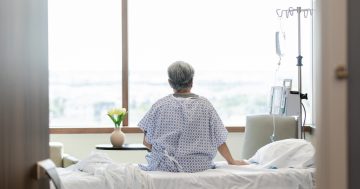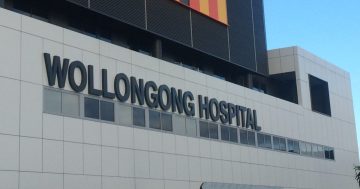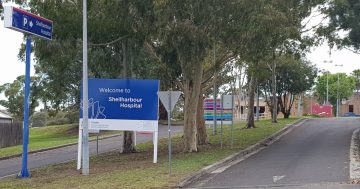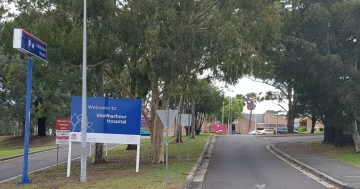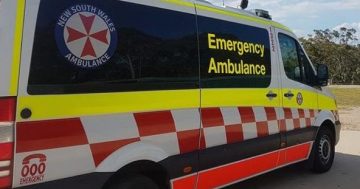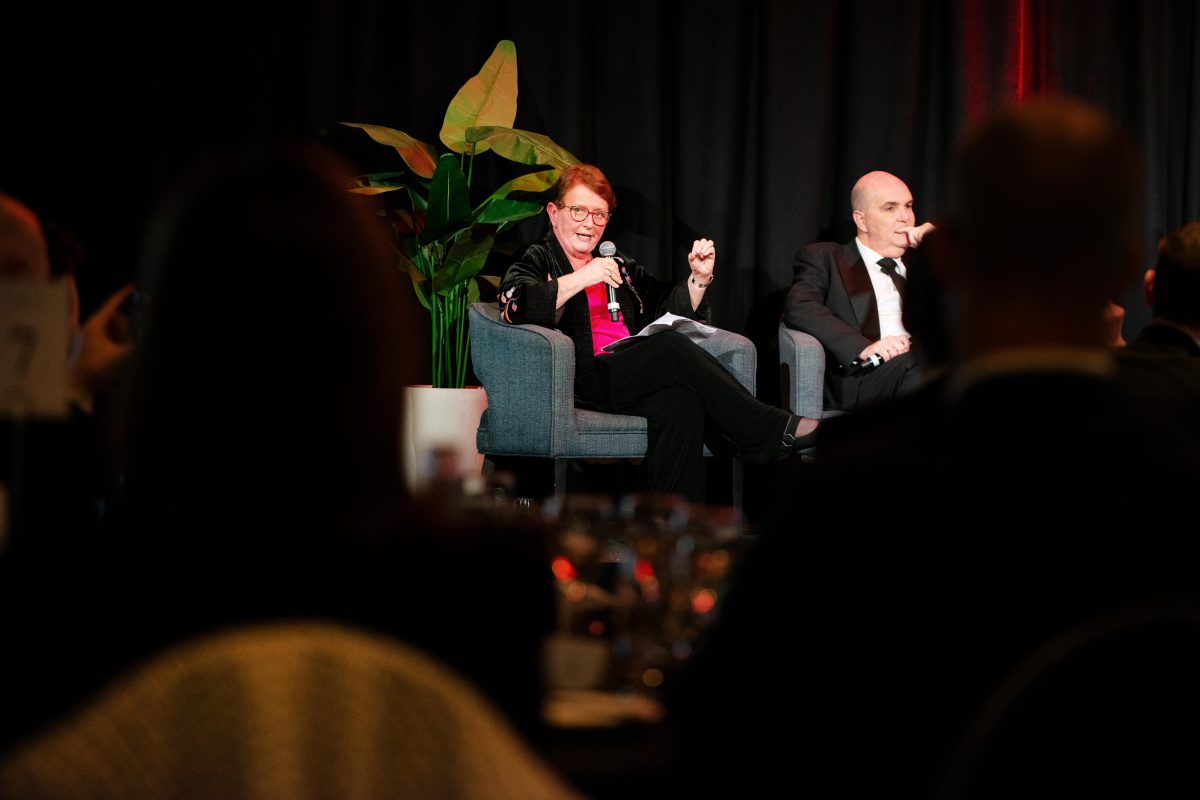
ISLHD Chief Executive Margot Mains and BlueScope’s David Scott at The Illawarra Connection discussion this week. Photo: Chilby Photography.
Leaders in four key sectors of the Illawarra – health, aged care, manufacturing and tourism – were invited to gaze into the crystal ball and offer an insight into the future of the region earlier this week.
The bi-monthly dinner meeting of The Illawarra Connection heard from Margot Mains (ISLHD), Jenni Hutchins (Warrigal Aged Care), David Scott (BlueScope) and Simon Kersten (Destination Wollongong).
Despite the restrictions of a panel discussion of an hour, they each provided a real insight into their areas of expertise, outlined the challenges and while the accuracy of the crystal ball is yet to be tested, offered their take on what the future holds.
But of particular interest was the information shared on the state of our hospitals and aged care sectors, which are inextricably linked in this region. Both of which have been under siege, especially since COVID-19 first appeared.
They are our biggest employers – according to the latest Census data (2021), about 17 per cent of Illawarra residents work in the “health care and social assistance” sector.
It’s also an area more residents are likely to have interaction with, whether it be hospitals, disability services, aged care, medical, allied health services or mental health professionals.
Margot is Chief Executive of the Illawarra Shoalhaven Local Health District (ISLHD), a role she’s held since 2014. The panel moderator, well known journalist and author Nick Hartgerink, introduced Margot by saying he believes she has one of the toughest jobs in the region, often facing budgetary and staffing pressures.
Judging by her opening comments, it’s hard to disagree. They also go a long way in explaining the immense pressure on our health system locally.
I have to declare an interest in that I worked at ISLHD for a couple of years in the communication space, so I probably have a better insight into the system than most. But like most people in the room, I was still taken aback by the extent of the complex challenges facing our health and aged care sector.
“Our population is growing. Our growth rate is 40 per cent higher than NSW and we’re the second fastest growing local health district in the state,” Margot said.
“Ten per cent of our population is over 75 and that will grow by up to 14 per cent shortly.
“We also have a population that’s got some very diverse health needs. We have a very high population that were born outside Australia.
“We have a population where more than 33 per cent of us have more than one health condition.
“We present often with two health conditions so we are more complex. And we also have an area that is experiencing marked failure in aged care and real challenges in primary care.”
We’ve all heard – and many have no doubt experienced – the stories about waiting for hours in emergency departments to be tended to, then waiting for a bed to be admitted.
The numbers don’t lie – in this year alone, the number of people presenting to hospitals with acute conditions has risen by 10 per cent.
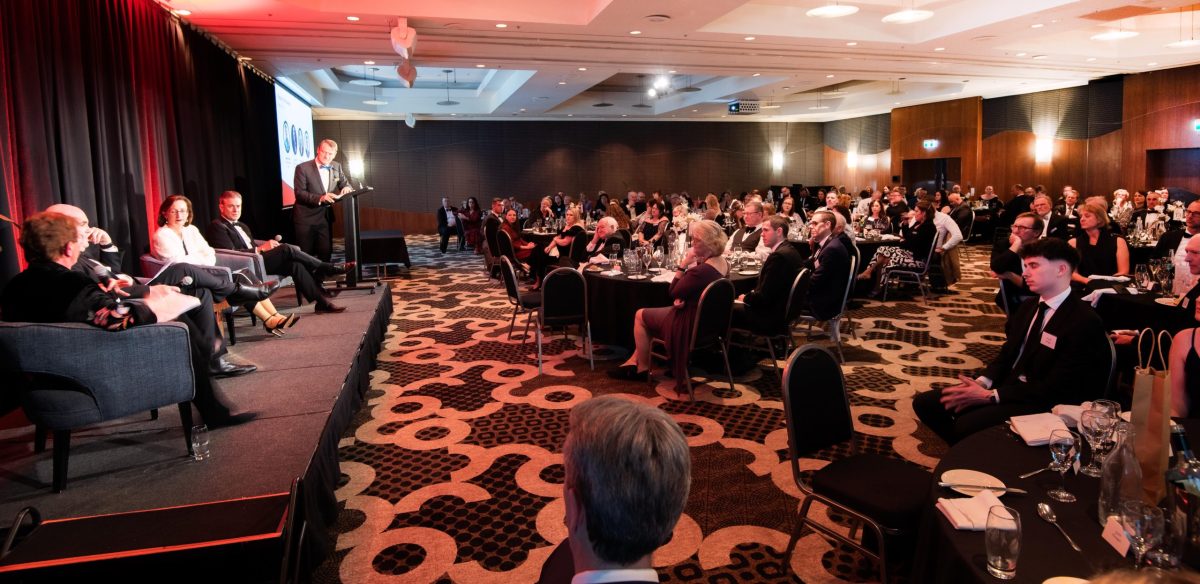
Moderator Nick Hartgerink questions the panel. Photo: Chilby Photography.
But what many people don’t realise is what’s going on behind the scenes that contributes to those frustrating delays.
As Margot said, “it’s not like a hotel where when you’ve got 100 per cent occupancy, you close your doors”.
“As of this moment, we have 154 people in our beds who we could discharge if they could get to alternative accommodation, like aged care facilities, or had the appropriate community support like the NDIS,” she said.
“If we had a stronger primary care sector, we would be able to care for people that don’t need to come to ED – which is about emergencies, it’s about trauma – and they actually could get the care they need.
“Like tonight, we often have in emergency 30 to 40 people waiting to get into beds, because if you’ve taken 154 beds out of your emergency backup, you’re limited as to the beds you’ve got available. So we’ve got a sicker population and need for more beds.
“We’ve also got the triumvirate at the moment – although I think it’s actually bigger than the triumvirate – and that’s the mixture of COVID, the flu, RSV, whooping cough and a range of other issues that are happening in our community.
“Many of them are converging in the same people, so we have got a lot of people who are very sick.”
As to the future of the Illawarra’s health system, Margot is clear that things need to be done differently, “because we cannot continue just doing things the way we are”.
She referred to the district’s $1.3 billion of infrastructure in the works, including the new Shellharbour Hospital, a clinical services plan for Wollongong Hospital and ongoing planning for a health precinct around the hospital for the Wollongong area.
And despite the incredible challenges imposed by the COVID-19 pandemic, it also resulted in the development of some “amazing opportunities” for virtual care services.
“We developed a virtual hospital where we can actually monitor people’s home wearables. And we’re into an era that will be able to monitor people through particles and actually detect a lot of diagnosis.
“The other thing that we’re also doing is using artificial intelligence so that we can get better at what we’re doing.
“In the health sector there are a lot of people who come in with what we call avoidable readmissions.
“Through running algorithms, we’re able to detect the factors that create people to re-present and we’re working on what we can do to avoid it and what we can do better.”
Margot rarely fails to acknowledge the hard-working, dedicated staff who work across the district’s hospitals and health services, and the audience was quick to applaud her tribute to the 8000 people with whom she works.
And rightly so – they’re doing the best they can to keep us on the right side of the grass.









